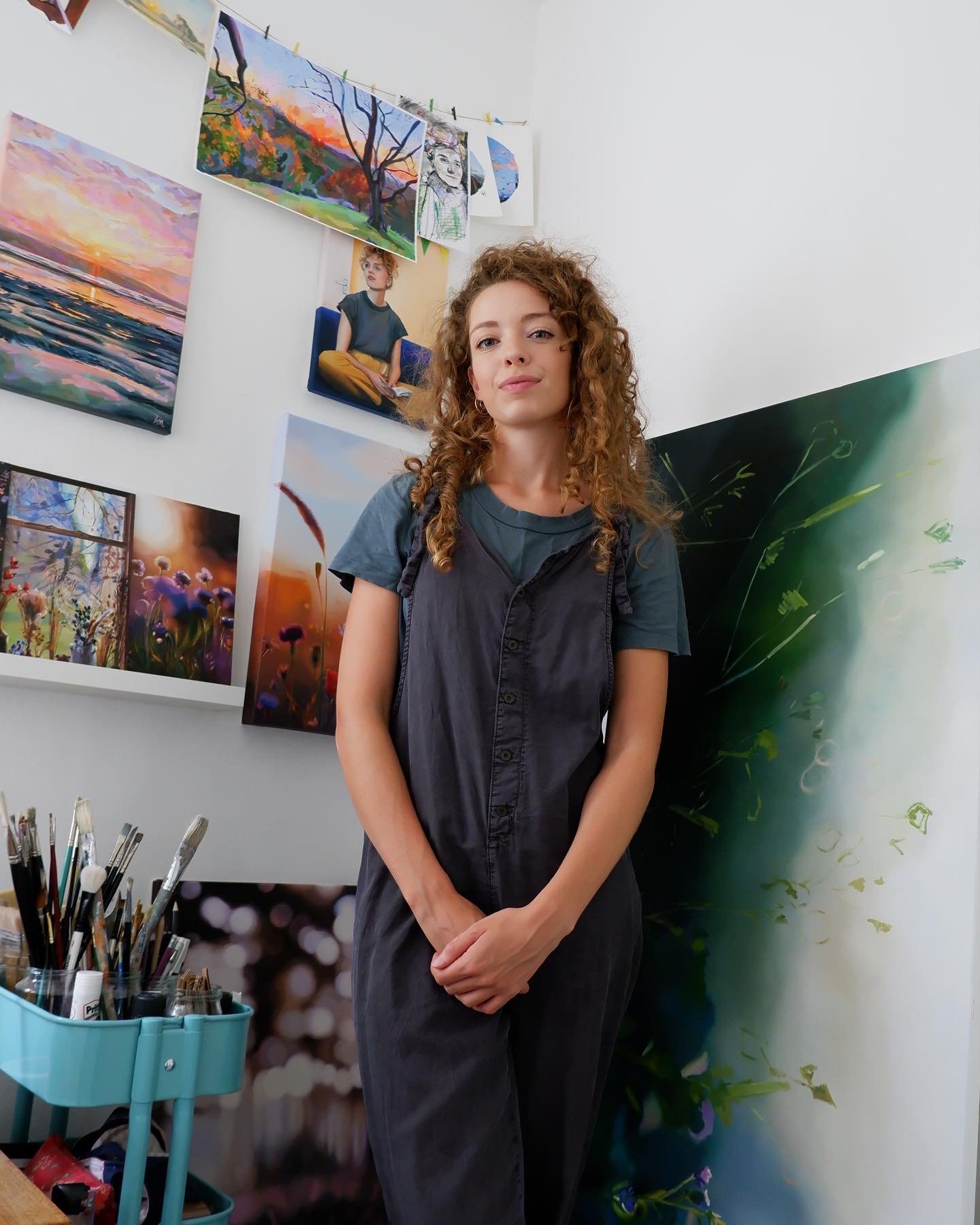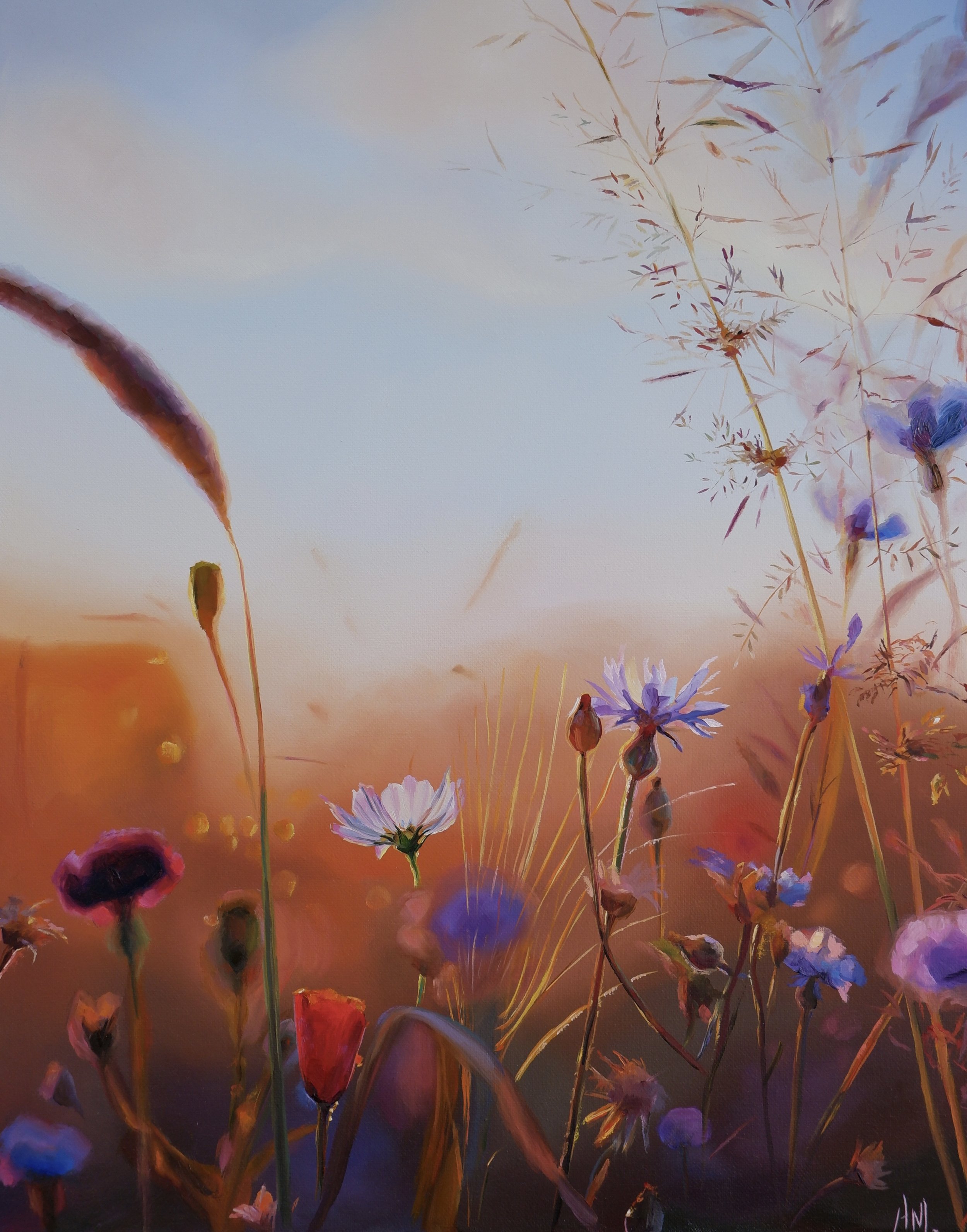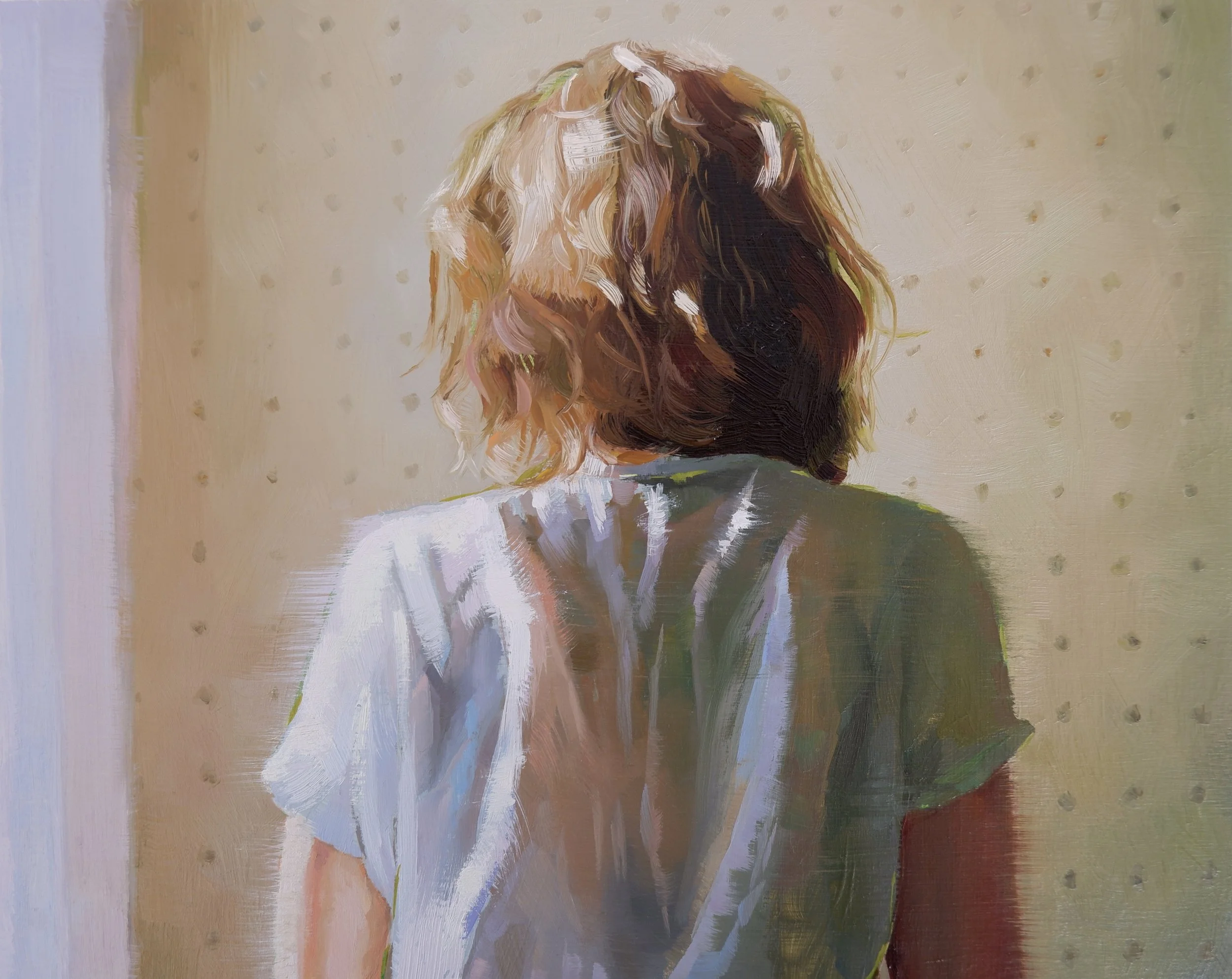ARTIST INTERVIEW: Alice Masters
Please introduce yourself. What sparked your interest in art?
I’m a self-taught artist based in SE London. I grew up in Essex, and if there is art in Essex, I didn’t see it. All I knew was that I loved to draw and paint. I was enthralled by the act of it; it started with colouring a gradient and mixing pigments, drawing hands and feet, flowers and faces and grew into what it is now. So I can’t remember it ever not being there. But my actual interest in the art world and other artists really sharpened when I left home to go to the Royal Conservatoire of Scotland. It was like the world opened up and I’ve been playing catch up ever since.
Why have you chosen to work primarily with oil paint? How does your medium reflect the narrative of your work?
It’s buttery and luscious and seems to work intuitively with my hand. The drying time, the thickness, the blending, the longevity, the layers... it suits the way I paint. I have to be careful to concentrate, otherwise I can go on automatic mode without noticing what I’m doing for hours. I’m obsessed with natural, dramatic light, and I haven’t seen any other medium capture it so mesmerically. I like acrylic, too, but usually just for the under layers because it helps me start with fast, clean, expressive brush strokes, and then I’ll refine with oil layer by layer. I’m open to other mediums, too - charcoal, sculpture and film-making especially - but there is still so much to play with and understand about oils, I’ll never tire of using them.
You are greatly influenced by the late 19th century and early 20th century, what do you find compelling about this period of art?
I am bewildered by the expression of light and the sense of atmosphere that arose from this time. Look at any Monet sunset and his impression of movement and reflection. And then there are the intimists - Pierre Bonnard, Édouard Vuillard and Gwen John with their intimate depictions of domesticity. It suits my instincts right now and feels especially necessary - to celebrate the everyday when time feels like it is running too fast. There is also Felix Vallotton whose work I can imagine illustrating novels - they are so cinematic and witty with his mastery of narrative suspense. His sunsets are wildly beautiful, too.
What are the common themes in your work?
Though I tend to wake up each day with a different subject I’d like to paint - the sunrise at my local pond, my friend knitting at the pub, my feet, a bowl of soup - if there is a common theme, it is likely the transience of a moment. I play with feelings of nostalgia, familiarity and fun, with old and everyday objects. I have a pretty rubbish memory and so I’m often chasing them in my paintings.
I’m naturally drawn to paint the rising and setting sun, with the long, fast moving shadows and halos of light around flower buds. I’m also watchful of the natural world and its shifting seasons.
However, I’m mostly fascinated by people and their interactions with their surroundings. I enjoy suggesting narratives, painting imagined scenes from books, poems and films I have connected to because I can carry the weight of the story into the painting.
It’s relieving to break the sentimentality of a painting with something silly or ordinary. One of my favourite recent paintings is of my friend sleeping grumpily at an airport and it felt so recognisable and specific that I hope other people connect with it, too.
Thinking about your portraits, what are the attributes of an interesting face to paint?
Light helps. And openness does, too. I often paint commissioned portraits and the photos I am sent as reference usually have quite a direct look to the camera. When I’m working on a piece for myself, I usually find photos of friends that I have taken on impulse, natural and unposed. Their gaze could be far away, or just out of view. These paintings can feel very rooted. The dynamic completely shifts - the face people present versus the underneath, though of course, it’s almost impossible to catch someone feeling unwatched.
Describe your creative process for your most recent work.
Usually the idea for a painting will come when I'm away from the studio. I’ll take a photo, write it down, or if possible, make a quick sketch. I occasionally paint en plein air, walking with my easel, searching for a view or funky tree to paint. I’m not always sure how I determine the size of my work, but recently I’ve been working on little panels - they were capturing little moments and memories and so it felt right to make them small. I could then complete them more immediately, chasing the initial excitement of the idea, rather than waiting weeks for layers to dry. I blocked out rough shapes with acrylic first, adding texture and expressive strokes and then I moved in with the oil. I used a few techniques to manipulate the paintings a little - scumbling and scraping away paint with a cloth and palette knife - to help with capturing the haziness of a memory.
Out of all your artwork, which piece are you most proud of, and why?
I have 2 for this; one that I might not show anyone. It is the first painting I really painted for myself. I feel very lucky to have had commissions keep me going. However, as a full-time artist in my early career with London rent to pay, I said yes to everything. It was brilliant practice and it is wonderful being a channel of connection from a person to their painting, but my work was naturally becoming about survival, rather than expression itself. I wasn’t allowing myself the time, freedom and daring to just create. A couple of years ago, I bought a large canvas and finally allowed myself time to make a piece inspired by a poem on my mind. It became so messy, confused by all the ideas I had wanted to express over so much time, that the actual work isn’t great. But it was so exhilarating to paint, and I’m just proud that I gave myself the permission.
The second piece is a recent one called ‘Closed Eyes’. During the process of painting it, I felt totally uninhibited, focused and elated. But I’m also happy with how it turned out - especially the spread out rays of light and the mystery of why her back is turned to us. Though, from her body language, she seems relaxed, basking in the light, since she has her back towards us, this could feel tender and trusting or quite the opposite. I wanted to magnify the boundary between the public and private; the social, the hidden, the intimate, the exposed. Within that comes the viewer either feeling a deep connection to the subject or feeling as though they have guiltily caught something that might not be ‘meant for them’.
If you could own an original of any artwork in the world in your home, what would it be and why?
Cecily Brown’s ‘Teenage Wildlife’ because I’m a romantic.
Why do you think art is important in society?
Sometimes if I’m having a sticky day in the studio or in a gallery looking at art that I don’t understand, it can suddenly seem frivolous, inaccessible and indulgent. No matter the price, it’s a luxury. It’s not water, food, shelter or medicine. But merely surviving isn’t what makes up a life and I’m just not certain there would be joy without it. Even for the people who have never visited an art gallery, it has wormed its way into all of our lives. Both being an artist and a viewer can feel inaccessible, but art should say yes to all voices; every artist has their audience and vice versa, you’ve just got to find them.
Usually when I’m sceptical of art, the problem is with me, not the art...because it’s hard to be challenged. Art demands openness and confronts preconceptions. It shapes a world of possibilities. It documents history. For me, it has untangled incomprehensions, stirred me into action, asked me to empathise and allowed me chances to escape or reflect.
It’s vital, and ultimately, there has to be a reason why art has been around for the entire time that we have.












